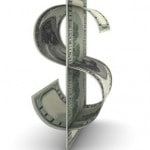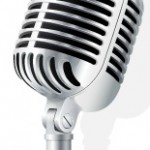August 2011 Auto Sales and The Implications For Sirius XM
August 2011 auto sales figures are in, and as anticipated the numbers came in between 1 million and 1.1 million. The total sales tally for the month was 1.07 million, slightly better than July, but not a pace that will set the world on fire. Earlier in the month I had warned that the tenor of auto sales would have an impact on Sirius XM Satellite Radio (NASDAQ:SIRI), and that prediction came to fruition.
I have oft said that a key number for Sirius XM was 1 million cars sold per month. It is the 1 million number that allows Sirius XM to announce decent numbers across the board in any given quarter. In Q2 of 2011, as with previous quarters, this mantra has held true. Q3 2011 offers a new dynamic that I have also spoken of. The disaster in Japan in March of 2011 will now bear its head for Sirius XM in Q3.
Each month I break down the auto sales into sub-categories that impact Sirius XM. The key in understanding the auto channel and the implications to satellite radio is that there are three distinct ways in which subscribers come to Sirius XM. I call these categories “LEADING”, “POINT-OF-SALE”, and “TRAILING”. Leading OEM partners deliver subscribers at the time of production, Point-of-Sale at time of sale, and Trailing only if the subscriber elects to keep Sirius XM after the trial period.

The key for Sirius XM is to keep somewhat of a balance between these three categories. With the disaster in Japan we saw a distinct shift in Q2 to manufacturers that come from the Leading category. This factor allowed Sirius XM to announce over 450,000 net subscriber additions as well as decent numbers across the board. Now it is time to pay the piper. The impact of the disaster in Japan was that manufacturers in the trialing category had a lull in the number of potential satellite radio subscriptions that they would typically infuse into the pipeline. Simply stated, fewer potential subscribers equates to fewer gross additions. Thus, Q3 will see the impact of the disaster in Japan because there are fewer potential subscriber in the pool from the trailing category.
As if that was not enough of a bear case, we now need to consider actual auto sales in Q3. Trough August, auto sales are pacing down by 100,000 units as compared to Q2. This translates into fewer overall potential subscribers for Sirius XM on top of the Japan issue I have warned about. This should temper the subscriber numbers in Q3 to a certain extent. One potential saving grace is that cars from the “Certified Pre-owned” (CPO) programs and the new “used car deal with GM” are counted in the trailing category.
One key element that Sirius XM investors need to understand is that while subscriber numbers will likely be less than the company reported in Q2, there is no danger of the company missing their guidance of 1.6 million subscribers for 2011. September is typically a very good sales month for new car sales, and the auto sales for Q3 will likely be in the same neighborhood as Q2 because of this. With the Japan impact being between 35,000 and 50,000 units, the company is certainly still safe with their guidance, though the subscriber number will be less than we saw in Q2.
September auto sales will now be a key for Q3. Auto sales for the final month of Q3 need to come in at 1.15 million, a number that has not been seen since April, to match the overall sales of last quarter. Sirius XM suffered the immediate news of August auto sales this week with the stock trading down. The news was not all bad, as year over year comparisons were positive for many automakers, but the company is tied to the auto sector news whether we like it or not. The street sees that auto sales are not on a pace for an overall recovery and the months left in 2011 are now fewer.
The moral of the story? Be prepared for potentially weaker subscriber numbers, but feel confident that the 1.6 million subscriber number is still a very safe bet.





What’s a matter, Spence? Can’t sleep so decided to post some half baked BS
Nothing is “A Matter”
I sleep well. Especially knowing that someone like you cares enough about me to think of me as often as you do.
Half baked? Nope.
I am confused by your allusion to be prepared for softer sub numbers in Q3. It appears you are contradicting yourself. This quarter, if September auto sales do well and there is no reason to believe otherwise, they should score more net subs exactly per your conclusions. The leading category has some growth and the trailing is unchanged. If the auto sales is between 1.1M and 1.15M, there is no way trailing category can have the effect you are describing. This may only catch up if the leading category significantly subsides in the future. This is my take of what you wrote. I would till expect close to 500K new subs in Q3.
Vi…
The let is in the mix of subscribers and how the disaster in japan impacted q2 and q3.
In q2 we saw a bump up in the leading category. This provided an influx of subs that otherwise might have not been there (the positive impact). We also saw a substantial drop in the trailing category that would show impact to sirius XM in q3 (the offsetting negative impact).
Thus, if q3 sales simply matched q2, the company will report less than last quarter simply because there are fewer trailing subs in the pipeline. We saw the pull ahead impact in q2, now we will see the pull back impact in q3.
The balance in q2 had the leading category at over 40%his and the trailing at under 30%. Since then the trailing has picked up about a point and a half and the leading has lost a point and a half.
In addition, some plant closures that typically take place in june for the leading category actually happened un q3. Because the leading category is tied to production, the impact is felt in the present quarter.
To expect 500k in q3 is quite aggressive. At this point the pace is showing just over 400j.
Spencer-
Very interested investor in SIRI here. Have you ever looked at the correlation that exists between SIRI’s subscriber additions and the number of cars sold? Based on the number of times I have seen the new car data talked about (on this and other boards) I would assume that it is strong…but how strong?
And what are your predictions for the recent price increases? Is it going to increase revenue over the long run or are we going to see such large reductions in new subscribers that we will actually be hurting our revenue numbers?